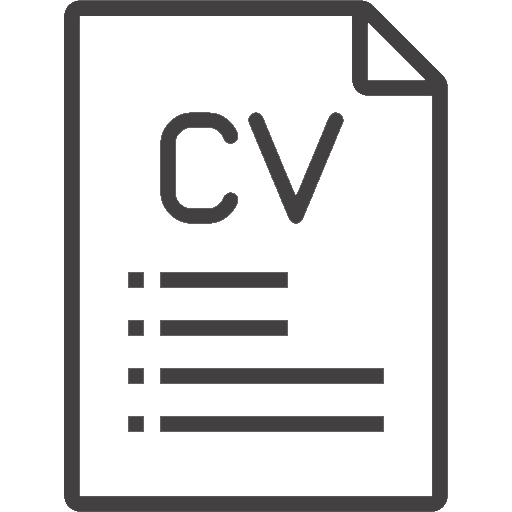Resume
Professional Experience
- 2021 – 2025:
-
Post-doctoral researcher at CVMR, Lausanne University Hospital, Switzerland
> Development of whole-heart quantitative MRI to characterize heart failure with preserved ejection fraction
- 2020 – 2021:
-
Temporary research and teaching assistant (ATER) affiliated to POLYTECH Marseille and LIS - UMR 7020, at Aix-Marseille Université, France
- 2017 – 2021:
-
read_more
PhD Thesis in Computer Science at
LIS - UMR 7020,
Aix-Marseille Université, France
Subject: Segmentation and characterization of deformations of soft tissue organs from MRI: Applications to muscle and pelvic imaging
Abstract
Computational anatomy aims to develop computer processing methods to enrich diagnosis by extracting objective and clinically useful information from medical images. The deployment of such methods remains limited for the exploration of soft tissue organs, especially in the two application contexts discussed in this thesis, namely the study of pelvic floor disorders and neuromuscular diseases via magnetic resonance imaging (MRI). In these domains, the segmentation step is essential to allow the characterization of physiological alterations occurring within the organs of interest. The high phenotypic variability in these pathologies has so far limited the development of robust automatic segmentation methods, limiting clinical research on large populations. The main contribution of this thesis was the development of a supervised segmentation approach based on diffeomorphic image registration propagation methods. The objective of this approach was to simplify the segmentation of image series presenting a continuity of information between successive images, whether they are time series or three-dimensional images. By considerably reducing the manual involvement of an operator and by providing a robust and accurate result, this method has been validated for the segmentation of skeletal muscles as well as the bladder in pathological contexts. In the muscular aspect of this thesis, our segmentation method has also been extended for the longitudinal follow-up of patients and the developed computer tools have been directly applied in several clinical studies in order to characterize different neuromuscular diseases via the extraction of scores from quantitative MRI. In the context of pelvic statics disorders, the combination of our segmentation approach with advanced dynamic multiplanar imaging and point cloud registration methods has allowed the first dynamic 3D visualization of pelvic organs during loading exercises.
- 2017:
(6 months)
-
Research Engineer at Protisvalor, CRMBM - UMR 7339, Aix-Marseille Université in the MSK group, France
> Analysis of muscle MRI data
> Development of segmentation methods based on registration (multi-atlas, transversal and longitudinal propagation)
> Characterization of neuromuscular diseases via the quantification of individual muscle volumes and quantification of fatty muscle infiltration through analysis of several maps (MTR, PDFF, T2, T2*) reconstructed from different MR sequences
> Python (mainly used packages: numpy, scipy, nibabel, nipype), ANTs Library, FSL-FMRIB Software Library, FreeSurfer Software Suite
- 2016:
(6 months)
-
Engineer Intern at CRMBM - UMR 7339, Aix-Marseille Université, France
> Development of segmentation tools for MRI images of muscle based on non-linear registration approaches
> Original contribution of a semi-automatic segmentation algorithm allowing an automatic transversal propagation of manually-drawn masks based on several nonlinear registration approaches
> Python (mainly used packages: numpy, scipy, nibabel, nipype), ANTs Library, FSL-FMRIB Software Library, BrainVISA-Anatomist
Supervisors: David Bendahan and Arnaud Le Troter
Educational Background
- 2017 – 2021:
-
Abstract
Computational anatomy aims to develop computer processing methods to enrich diagnosis by extracting objective and clinically useful information from medical images. The deployment of such methods remains limited for the exploration of soft tissue organs, especially in the two application contexts discussed in this thesis, namely the study of pelvic floor disorders and neuromuscular diseases via magnetic resonance imaging (MRI). In these domains, the segmentation step is essential to allow the characterization of physiological alterations occurring within the organs of interest. The high phenotypic variability in these pathologies has so far limited the development of robust automatic segmentation methods, limiting clinical research on large populations. The main contribution of this thesis was the development of a supervised segmentation approach based on diffeomorphic image registration propagation methods. The objective of this approach was to simplify the segmentation of image series presenting a continuity of information between successive images, whether they are time series or three-dimensional images. By considerably reducing the manual involvement of an operator and by providing a robust and accurate result, this method has been validated for the segmentation of skeletal muscles as well as the bladder in pathological contexts. In the muscular aspect of this thesis, our segmentation method has also been extended for the longitudinal follow-up of patients and the developed computer tools have been directly applied in several clinical studies in order to characterize different neuromuscular diseases via the extraction of scores from quantitative MRI. In the context of pelvic statics disorders, the combination of our segmentation approach with advanced dynamic multiplanar imaging and point cloud registration methods has allowed the first dynamic 3D visualization of pelvic organs during loading exercises.
- 2015 – 2016:
-
Master Of Applied Science, Computer And Electrical Engineering, Université de Sherbrooke, Canada
> Bioengineering
> Agile development methods
> Microprogram in Engineering Project Management
- 2011 – 2016:
-
General Engineering Degree, ISEN Brest, France
> Specialization in medical and health technologies (image processing, medical imaging, bioinformatics)
Skills
- Computer Science
-
Python, Matlab, C, C++ (OpenCV), Java
PHP, JavaScript, HTML, CSS
GIMP, LaTeX, Git, Suite Office
- Image Acquisition
-
Siemens IDEA Sequence Programming
- Image Processing
-
Image segmentation, Image registration, Deep learning
Medical image expertise (DICOM, NIfTI ...)
ANTs Library, ITK, FSL (FMRIB Software Library), FreeSurfer Software Suite, BrainVISA-Anatomist
- Operating Systems
-
Linux, Windows
- Project Management
-
Agile Methodologies, Scrum
Microprogram in Engineering Project Management (Université de Sherbrooke, Canada)
- Languages
-
French: Mother tongue
English: Full professional proficiency
Supervision
I have supervised several students on internships. Full list is available here.
Awards
- 2019
-
Best Poster Award
17èmes journées de la Société Française de Myologie (JSFM), Nov 2019, Marseille, France
Community
Member of the following scientific associations: International Society for Magnetic Resonance in Medicine (ISMRM), IEEE Engineering in Medicine and Biology Society Membership (EMBS), Society for Magnetic Resonance Angiography (SMRA), Groupement de Recherche en Traitement du Signal et des Images (GRETSI), Société Francaise de Résonance Magnétique en Biologie et Médecine (SFRMBM), Société Française de Myologie (SFM).
Reviewer: Journal of Cardiovascular Magnetic Resonance, Magnetic Resonance in Medicine, NMR in Biomedicine, Scientific Reports, Frontiers in Physiology







